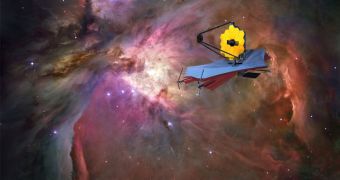During a conference call on November 1, JWST program manager Rick Howard told a Congressional panel that NASA will have to delay a number of space missions currently scheduled to launch beyond 2015, if the agency is to fly the James Webb Space Telescope in 2018.
The organization is very intent on finishing its flagship telescope, a near-infrared observatory that will represent the most complex piece of equipment ever deployed to space. At this point, the vehicle is estimated to cost about $8.8 billion.
During the conference, Howard told members of the NASA Advisory Committee's Science Committee that the space agency cannot possibly support the JWST project while at the same time providing sufficient funds for other planned missions.
However, he made it clear that NASA's priority is the James Webb, and not some other satellite or spacecraft. This instrument will have the ability to observe the Universe up to near the Big Bang, determine how galaxies form and evolve, and find Earth-like exoplanets around distant stars.
But the mission is now scheduled to cost $8.8 billion, which is several times the initial estimate of $2.58 billion. Technical difficulties and poor management led to the tremendous cost overruns, which no one can deny, Space reports.
However, the benefits that the JWST will bring to science, and to our understanding of the Universe around us, are also undeniable, which is why the international science community jumped to defend the project as soon as the House proposed cutting funding for it altogether, earlier this year.
The Senate proposed continuing to fund the telescope, to the levels NASA requested for 2012. However, a final version of the 2012 budget has yet to be agreed on, even if the 2012 fiscal year began in late September.
At this point, NASA has not yet decided as to which missions it will cancel or delay in order to keep the large telescope going. “That is still in discussion, even for 2012, within NASA and the administration,” Howard explained to officials.
“The impacts being assessed in Science would delay some future missions, which are currently planned for launch beyond 2015.” he said, referring to the NASA Science Mission Directorate, in Washington, DC. Some of these missions are not yet known to the public.

 14 DAY TRIAL //
14 DAY TRIAL //